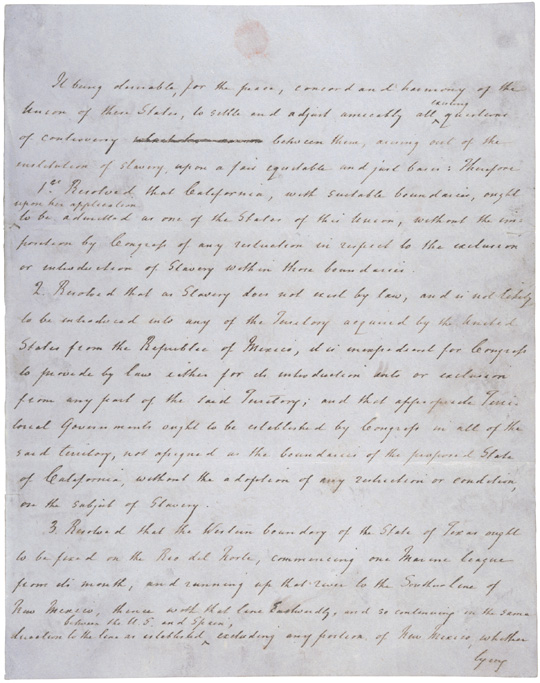Compromise of 1850 was a series of acts passed in 1850, by which the United States Congress hoped to settle the strife between opponents of slavery in the North and slaveowners in the South. These laws helped delay civil war for about 10 years.

The main problem was whether the territory the United States received as a result of the Mexican War should have slavery. As part of the Compromise, California entered the Union without slavery. The territories of New Mexico and Utah were organized, but the slavery question was left to the settlers in each territory to decide. To satisfy the South, the Compromise gave Texas $10 million to abandon its claims to New Mexican territory and give up other claims. The Compromise also set up a stricter federal law for the return of runaway slaves. To please the North, the slave trade was abolished in the District of Columbia.
Daniel Webster, Henry Clay, and Stephen A. Douglas led in winning the passage of the Compromise laws. John C. Calhoun led Southern opposition to the laws. For a few years, the Compromise seemed to have ended the friction. Business people wanted peace so prosperity would continue. But many Northerners thought the Fugitive Slave Law was too harsh, and some states interfered with its enforcement. Slaves continued to escape to Canada by the underground railroad. However, slavery did not become a major issue again until the Kansas-Nebraska Act of 1854 made slavery legal in those territories where it had been prohibited by the Missouri Compromise in 1820.
